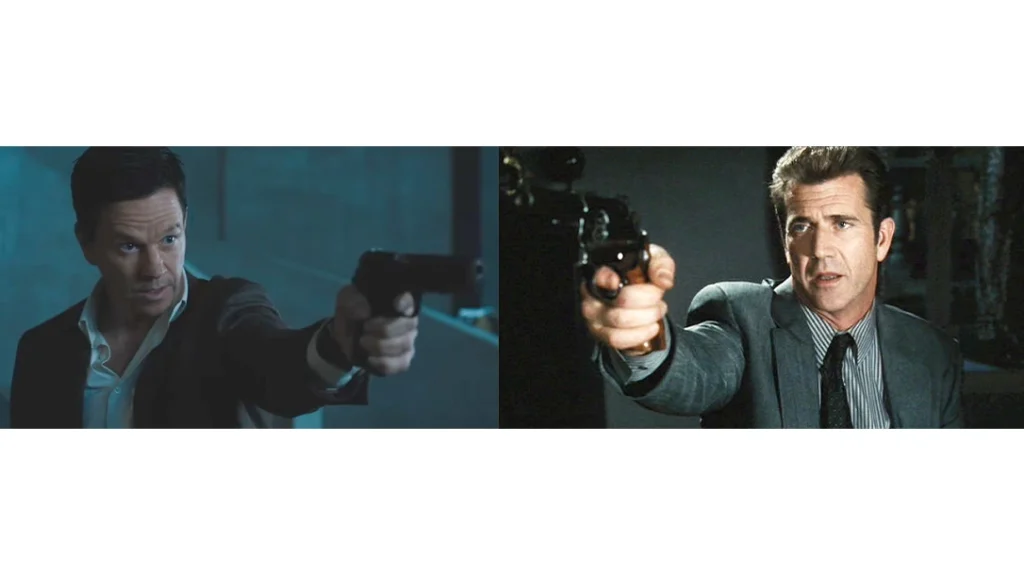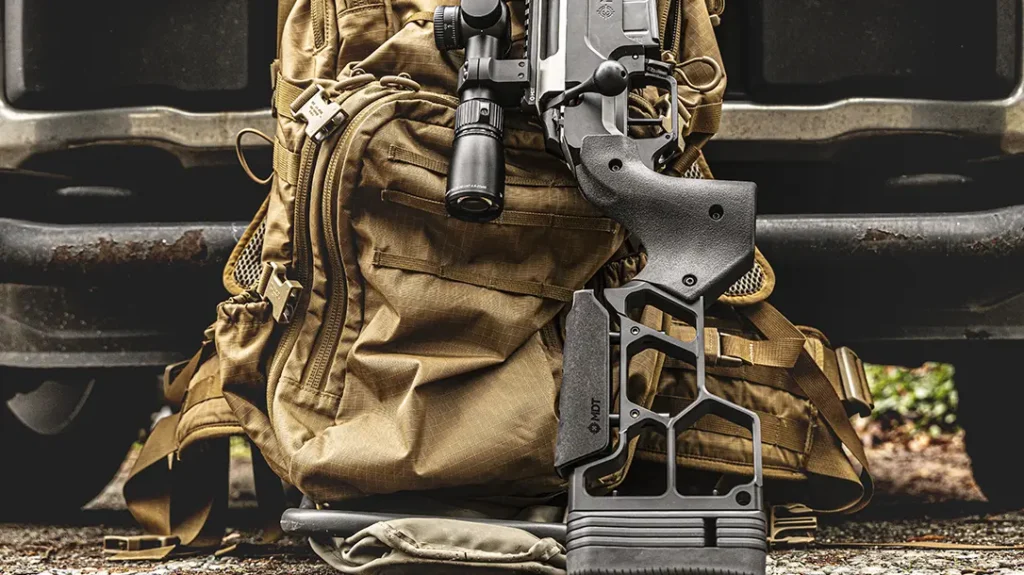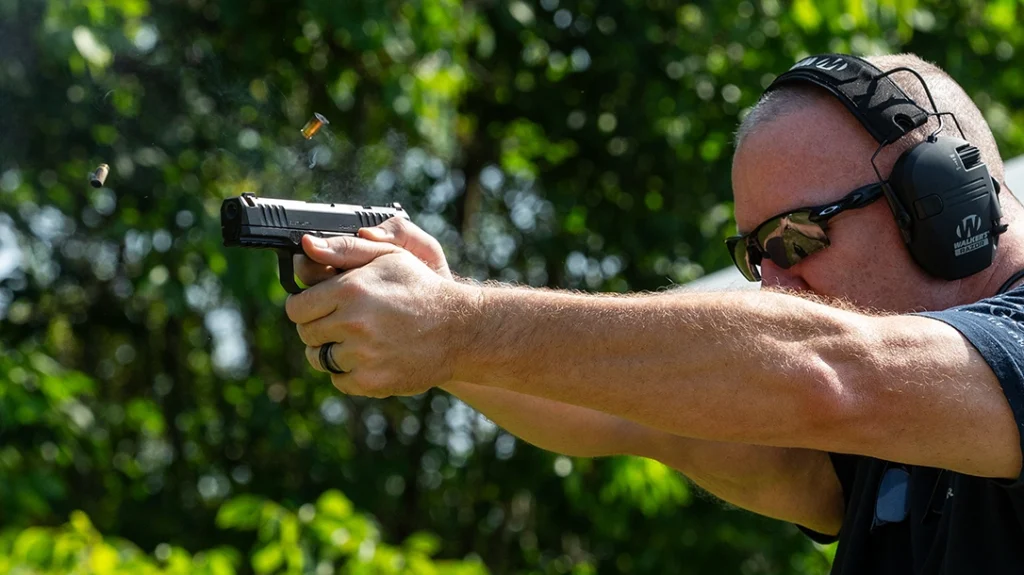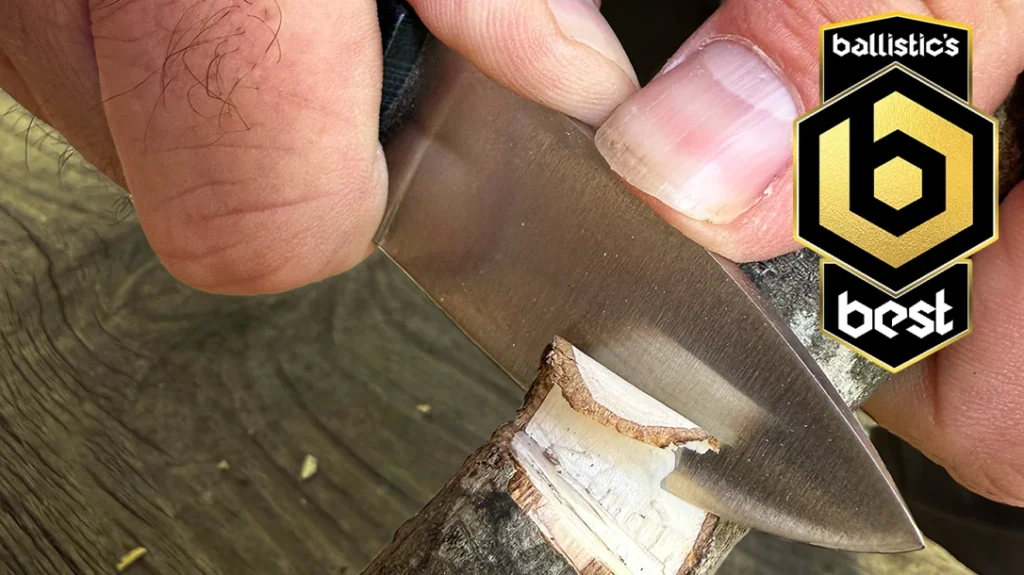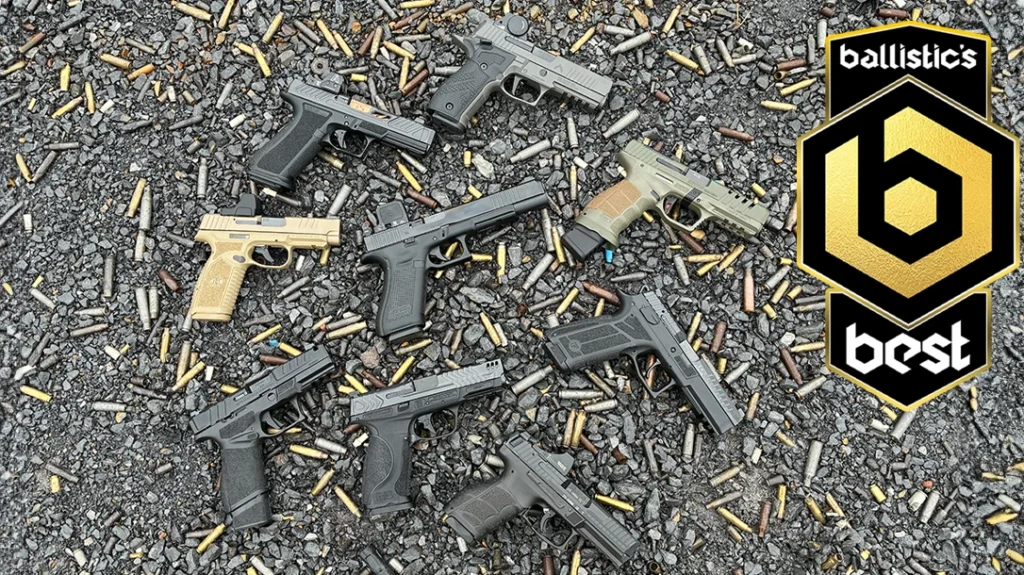I first kissed my wife in the 1980s. Those ten years saw my first car as well as my graduation from both high school and college. That’s also when I first jumped out of a perfectly good airplane. That was obviously a pretty magical decade for me.
The hair was big, the music was loud, and the fashion seemed borderline criminal. However, back in the days before the Internet, life was nonetheless somehow simpler…better. That basic observation manifested in so many wonderful ways.
1980’s muscle cars in the days before so many environmental rules were pretty rad. Hollywood brought us such timeless classics as The Terminator, Die Hard, Empire Strikes Back, and Predator. And then there were the guns…
Advertisement — Continue Reading Below
Nowadays stubby little rifle-caliber carbines are all the rage. Ubiquitous body armor is an actual thing, so modern armed professionals demand a bit more penetration than was the case back in the days of Michael Jackson and Def Leppard. However, in the 1980’s the pistol-caliber submachine gun reigned supreme. Amid a crowded field that included the Beretta PM12, Colt Model 635, MAC-10, and sundry Uzi variants, the HK MP5 outpaced its peers. While that sleek German roller-locked SMG was undeniably sexy cool, one particular sub-variant eclipsed them all. The sound-suppressed HK MP5SD was the baddest submachine gun ever crafted by man.
HK MP5SD Origin Story
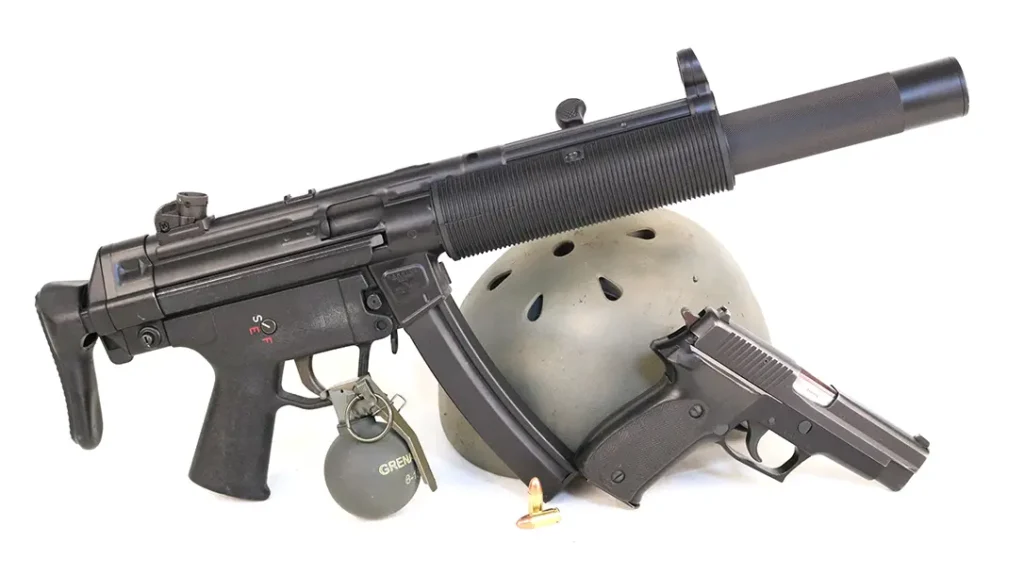
The 1980’s-era HK MP5SD was born during the planetary hemoclysm that was World War 2. By the early 1940’s, the Nazis realized they might have bitten off more than they could chew. With war raging on multiple fronts, their need for armaments had grown desperate. While their standard belt-fed machine gun, the MG34, was indeed a thing of mechanical beauty, it was expensive, sensitive to fouling, and a butt whooping to make. The solution came from a company that made railway lanterns called Metal und Lackierwarenfabrik Johannes Großfuß AG.
Advertisement — Continue Reading Below
The result was the MG42. Most of the MG42, save the synthetic grips and moving bits, was made from industrial stampings. The action consisted of a pair of roller bearings that snapped into corresponding grooves cut in the chamber end of the barrel. This design was both simple and cheap to make. The Germans churned them out by the hundreds of thousands.
The basic action was direct blowback with a twist. Mass times acceleration in one direction always equals mass times acceleration in the other direction. That’s not just a good idea. That’s the law. In the case of the MG42, there was also a muzzle device that captured a bit of the chaos and used it to help tap the barrel back as well.
That same operating system eventually found its way into the StG45 that arrived too late in the war to see action. German engineers spirited the plans for the StG45 away to Spain where it became the CETME rifle. In time, that design came back to Germany and was adapted by Heckler and Koch to fire 7.62x51mm, 7.62x39mm, and 5.56x45mm. HK got its start making stuff like machine gauges and bicycles. The subsequent 9mm variant was designated the HK54.
Advertisement — Continue Reading Below
Work began on the HK54 in 1964. The gun first saw service with the German Federal Police and West German border guards two years later. Where the MG42 required a little help on the muzzle end for reliable operation, the 9mm HK54 ran just fine based solely upon recoil forces alone. Despite being markedly more complicated than comparable open-bolt designs, the closed-bolt HK54 was unusually soft-shooting and accurate. The HK54 eventually morphed into the MP64 that ultimately became the MP5.
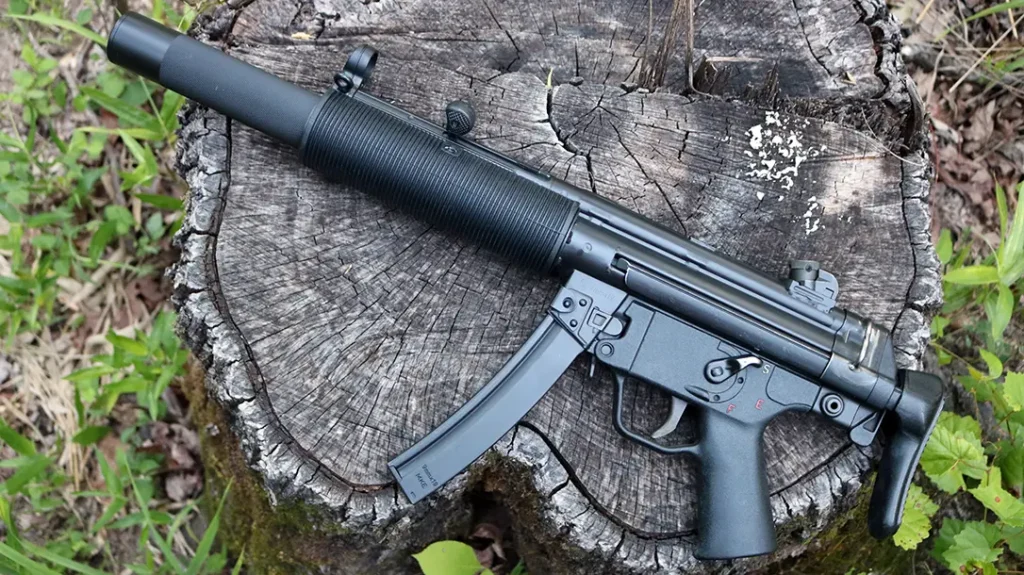
Mechanicals
The entrails of the MP5 really are unnaturally complicated. The bolt assembly has scads of parts, and the fire control unit looks like the inside of a sewing machine. However, the end result offers inimitably stable first-shot accuracy and unrivaled full-auto controllability. These attributes turned out to be perfect for law enforcement and military hostage rescue teams. In an era before widespread use of body armor, a pistol-caliber SMG that would deliver consistent head shots at 100 meters became the gun to beat.
Advertisement — Continue Reading Below
The closed bolt action of the MP5 is driven by a non-reciprocating charging handle located on the front left of the chassis. The bolt does not lock back on the last round fired. As a result, magazine changes involve manually securing the bolt to the rear, swapping out the magazine, and then slapping the charging handle down with the weak hand to drop the bolt over a fresh mag. MP5 magazines must be hooked in front and rocked back slightly to ensure secure lockup. This chore is actually slower than the same process on most competing weapons. However, it is also just so freaking cool.
Interchangeable fire controls offered any combination of semi-auto, full-auto, or burst-fire operation. The MP5 was eventually produced in more than 100 variants. Greece, Iran, Mexico, Pakistan, Saudi Arabia, Sudan, Turkey, and the UK all made the gun under license. Several companies produce clones for the American domestic market today.
The MP5 is an exquisitely well-executed weapon that orbits around a cheap pressed steel receiver. Industrial dies mash these things out by the hundreds in no time. The reciprocating bits demand some proper mechanical tolerances, but the receiver is quite forgiving.
Advertisement — Continue Reading Below
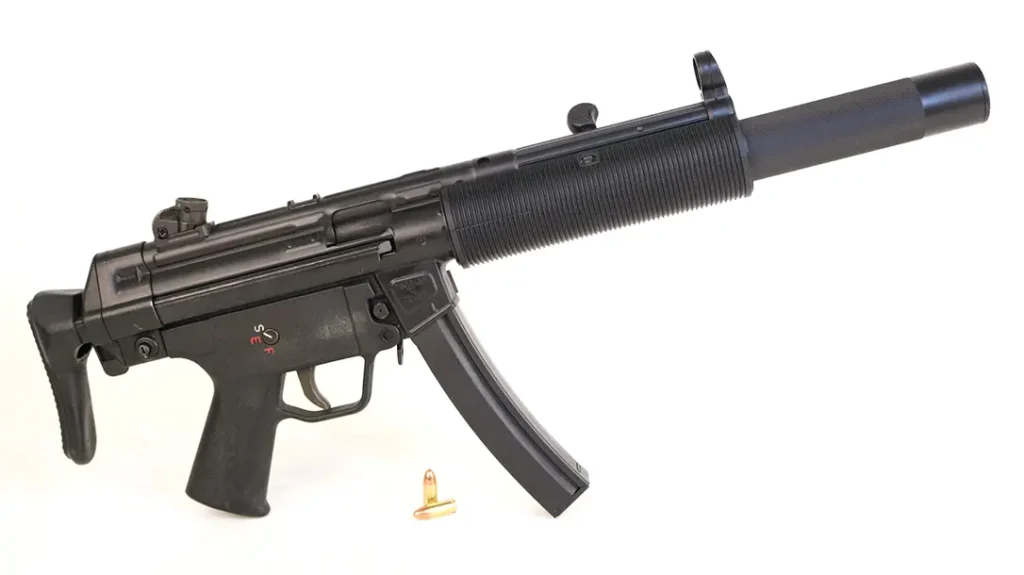
The MP5 comes in three broad flavors. The standard version accepts interchangeable buttstocks and trigger groups and sports an 8.9-inch barrel. This was the weapon used by Hans Gruber’s posse in Die Hard. The K-model has a stubby 4.5- or 5.8-inch barrel and a shortened receiver. The resulting MP5K and MP5K PDW cycle a little faster on full-auto as a result. The MP5SD, however, is the masterwork. SD stands for Schalldämpfer in German that itself translates to “sound suppressor.” This sound-suppressed version is built on a standard-length receiver but includes an integral sound suppressor.
Science Break
The speed of sound in dry air at 68 degrees F is 1,125 feet per second. That’s roughly 767 miles per hour. Sir Isaac Newton first calculated the speed of sound back in the 17th century, though he was off by about 15%. Cut the guy some slack, he was a visionary. Anything traveling faster than this mystical speed creates a shockwave. Shockwaves are reliably noisy.
Advertisement — Continue Reading Below
A decent sound suppressor will excise most all of the racket from a firearm. However, if that bullet is traveling faster than the speed of sound, it is going to make a lot of noise no matter what you hang onto the end of your gun. The obvious answer is subsonic ammunition.
Some calibers like the .45 ACP are naturally subsonic. Standard 115-grain 9mm ball, however, is not. Heavy, 147-grain 9mm loads are subsonic, but they are expensive. The HK solution was to port the barrel of the MP5SD such that standard-velocity 9mm rounds leave the muzzle below the speed of sound. In so doing, the MP5SD will run standard 115-grain FMJ ammo without the sonic crack. The British L34A1 sound-suppressed Sterling SMG does something similar, but no other production SMGs offered such performance.
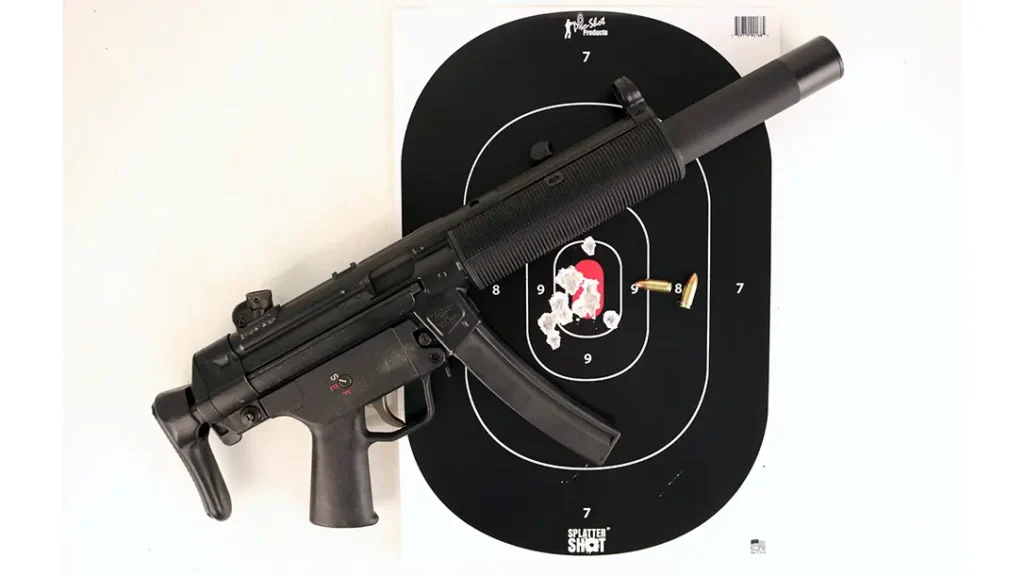
Advertisement — Continue Reading Below
Personality
The MP5SD is a bit longer and a bit heavier than the standard MP5. However, this means that recoil on this already eminently controllable platform is all but nonexistent. The front-heavy nature of the sound suppressor helps keep muzzle climb in check. A seasoned operator can write his name with this thing.
I have tried lots of different loads in the MP5SD and found the gun to be monotonously reliable. If running heavy, slow, 147-grain rounds with the sun at your back you can sometimes see the copper-colored glint from the bullets as they fly downrange. That’s a reliable crowd-pleaser.
If fired indoors without hearing protection the experience is still a bit unpleasant. However, out in an open space the MP5SD is shockingly quiet. It is hands-down the most docile 9mm SMG I have yet encountered. Nothing is stealthier, even today.
Advertisement — Continue Reading Below
Ruminations
The HK MP5SD is arguably the sexiest firearm in the world. It is reliable, controllable, and inimitably quiet. However, nothing in life is free. That stealthy subsonic personality comes at a cost. While 9mm ball ammo does not carry as much downrange thump as might a 5.56mm rifle round, artificially retarded 9mm ball is even worse.
When facing targets wearing soft body armor or even heavy clothing, this is no mean consideration. The U.S. Army Rangers used a few of these guns back when I wore the uniform. I recall one guy complaining that the MP5SD failed to consistently penetrate an oil drum at extended ranges. However, when the contact is up close and personal and you must remain covert, nothing else even comes close.
HK still produces they MP5SD, but they won’t sell them to us. Mine came from an outfit called TPM Outfitters. TPM has, tragically, gone out of business. The argument can be made that a suppressed carbine in .300 BLK does everything the MP5SD does only better. However, if it is cool points you seek, nothing can compare to slapping that charging handle down over a fresh magazine and stuttering away like a woodpecker wrapped in pillows. The MP5SD is pure unfiltered 1980’s awesome.
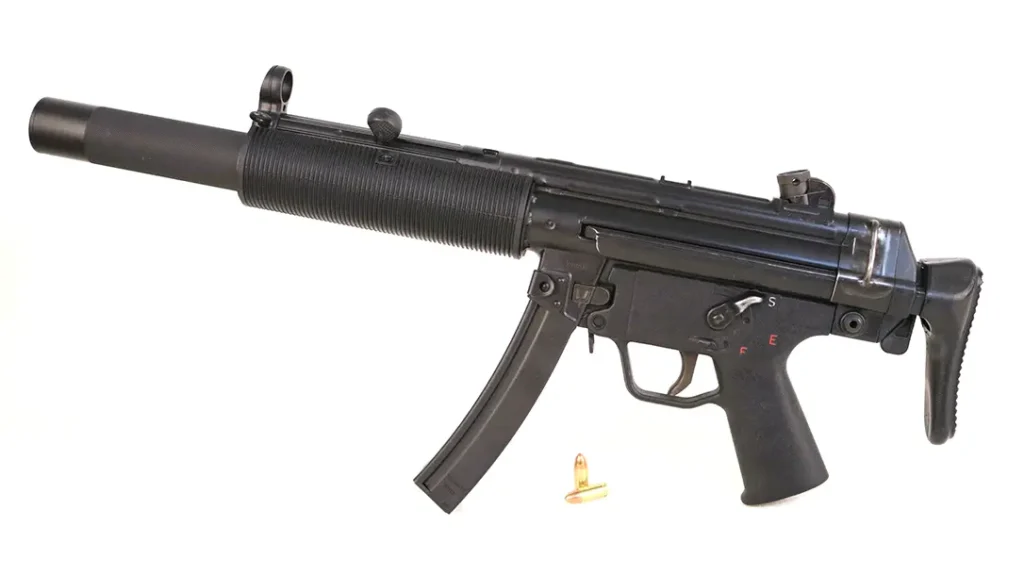
HK MP5SD Specs
- Caliber: 9mm Para
- Operating System: Roller-Delayed Blowback
- Overall Length: 25.8/31.5 in Retracted/Extended
- Barrel Length: 5.75 inches
- Overall Weight: 7.48 pounds
- Feed: 15/30-round Box Magazines
- Sights: Rear Diopter/Front Fixed Post


